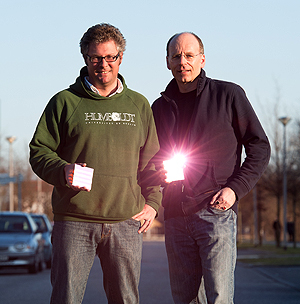Solar cell efficiency breakthrough

The early-stage breakthrough of a University of Sydney researcher and his German collaborators could see the realisation of 40% efficiency for low-cost solar cells suitable for rooftop panels.
With Australian Solar Institute support, Associate Professor Tim Schmidt from the University’s School of Chemistry, together with the Helmholtz Centre Berlin for Materials and Energy, has developed a ‘turbo for solar cells’, called photochemical upconversion that allows energy, normally lost in solar cells, to be turned into electricity.
The finding has been published in the Energy & Environmental Science journal.
Associate Professor Tim Schmidt said using the upconversion technique, a process which harvests the part of the solar spectrum currently unused by solar cells, eliminates the need for costly redevelopment of solar cells.
“We are able to boost efficiency by forcing two energy-poor red photons in the cell to join and make one energy-rich yellow photon that can capture light, which is then turned into electricity,” Associate Professor Schmidt said.

“We now have a benchmark for the performance of an upconverting solar cell. We need to improve this several times, but the pathway is now clear.”
The Australian Solar Institute is a $150 million commitment by the Australian Government to support the development of photovoltaic and concentrating solar power technologies in Australia.
$25m grant supports cleaner cement production
The upgrades will enable the Berrima Cement Works kiln to source up to 60% of its energy from...
$39m boost to NSW's EV fast charging network
Applications are open for Round 4 of the NSW Government's EV fast charging grants program,...
Agreement unites clean energy providers
Wind and water energy come together as Aula Energy signs a long-term power purchase agreement...










